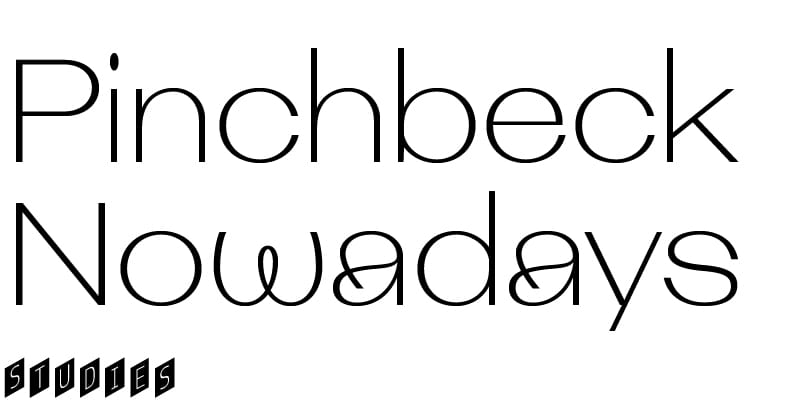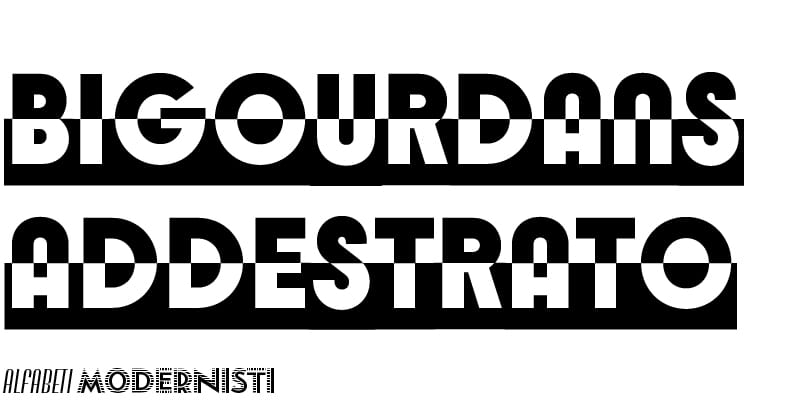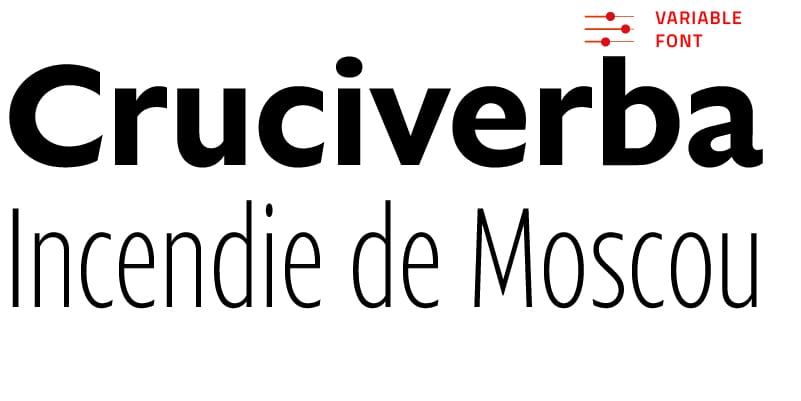With its peculiar and rough stylistic features, Rhau is a type revival based on four woodcuts used on four title pages of the Officia Paschalia, a collection of masses and choral compositions printed by Georg Rhau in Wittenberg in 1539. Originally intended for a selected audience of composers, this digital revival is an inspiration for display work.
Rhau









Font info
Supported languages
Production years
2021-2022
Additional info
Rhau: from the Reformation to Digitisation

Portraits of Georg Rhau (1542) and Martin Luther (1546). Both are probably the work of Lucas Cranach the Elder, who was a committed supporter of the Protestant Reformation and a close friend of Luther.
In May 2021, designer Giulio Galli got in touch with Sam Gossner, founder of Versilian Studios LLC, a company dedicated to producing virtual instruments and sample libraries for composers. Currently they are developing an application for re-setting music printed from 1500 to around 1650 called Early Notation Typesetter. It enables the digitisation of many musical scores – both the music type and the accompanying letters. Galli was happy to help with the latter and together with his client, design of three typefaces was decided, Roman, Italic and ‘Rhau’, which the designer says was by far the most challenging and interesting. This new entry in our Studies type collection is actually something rare and different, not easily pigeonholed into any of the usual categories.
Could you introduce us to your typeface? What about the name?
Rhau is a type revival based on four woodcuts used on some opening pages of parts of the Officia Paschalia de resurrectione et ascensione Domini (1539). The book is a collection of masses and choral compositions printed in the early days of the Reformation in Wittenberg by the German publisher and composer Georg Rhau. And it is worthwhile mentioning that Rhau’s support as a printer was critical to Luther’s success.
There are four woodcuts for the four parts of the publication: DISCANTVS, ALTVS, TENOR, BASSVS. Besides these capital letters, we had to design everything else from scratch. Consequently, a great part of the workload in designing Rhau was building a complete set to make the typeface suitable for contemporary use. This meant adding missing capitals, lowercase, numbers, punctuation and a few specific glyphs for music typesetting. All this while keeping the flavour of the original core of letters.

These capital letters are from the four opening pages of the Officia Paschalia (1539). The remaining letters of the Rhau typeface, including the complete lowercase alphabet, were designed from scratch by Giulio Galli.
Who cut Rhau’s titling letterforms? Where do their rough but debonair shapes come from?
There is no information about who made these woodcuts and exactly when. Whoever it was did so in a peculiar fashion for the time. The letters are quite big (roughly 30 mm tall) and the overall quality is not outstanding. But some stylistic features really do stand out. The letters are particularly dark for Renaissance romans and present unusual spiky serifs, sometimes with extreme rightward slants. Also, in letters like C, S and bottom E and L they are curiously curly.
While the work is not masterfully executed, overall, we can detect a degree of typographic awareness. The tilted axes of thick and thin contrast and other calligraphy-derived details like the smooth transition between thick stems and thin horizontal strokes (D) are a hint that whoever cut these plates either had some basic understanding of how letterforms came about or did their best to copy such details from an existing typeface.

Details from the opening pages of the Officia Paschalia.
Do you mean the Rhau caps were cut following a precise model?
Here comes a bit of speculation. Throughout the Officia Paschalia, Georg Rhau makes wide use of a set of capitals – and music types – most likely cut by Peter Schoeffer the Younger, known as Basel capitals because they were first used by Johannes Froben in Basel in 1517. These capitals, one might argue, display some embryonic characteristics of what we see in the woodcuts in the Officia Paschalia. Notice the curly serifs and the extreme angle of certain serifs such as L, or less extreme, but still curiously tilted in S and C.

More details of images from the Officia Paschalia.
Comparing the quality of the woodcut letters in question with Schoeffer’s set of capitals, it is unlikely that Schoeffer himself cut these letters. But what would be less surprising is that whoever made the woodcuts deliberately took them as reference for their work, maybe even trying to make them more ‘expressive’ – as we would say today – perhaps to suit his purpose. If this turned out to be true, it would be a very early example of a systematic approach to letter design. Thrilling to think about but I have calmed down a bit now. However, to state this with some confidence would require a thorough historical analysis rather than the conjecture postulated in this short piece. Nonetheless, the hints are there.
Last question: what is it about the Rhau typeface that makes it attractive beyond its original purpose?
The Rhau typeface stands out for its expressivity and plasticity. Both these qualities bring a flavour reminiscent of some early 15th-century gothic styles, or, even more so, of their late 19th- and early 20th-century revivals. As a designer I really appreciate the classy roughness of the original letterforms, their zeitgeist. Somehow they claim their distance from Rome (and the Papacy); and in fact they were cut in a crucial period for the Protestant Reformation which included the decline of rotunda types and the rise of fraktur in the German-speaking countries. This makes the Rhau typeface a sort of ‘transitional’ design of the Renaissance, with all its load of innovation and experimentation.

A sample setting of the Rhau typeface as a book face.
Styles
OpenType Features
Small Caps

Small Capitals From Capitals

Ligatures

Long-s ligatures

Fractions

Specimen
Rental options
You may also like
Designer:
Designer:
Designer:



